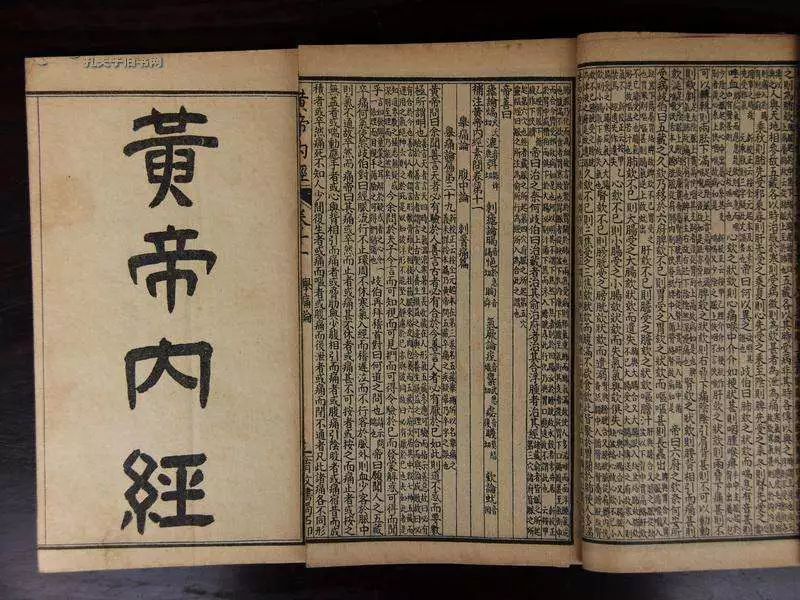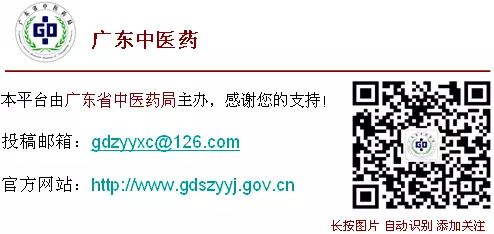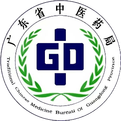
▲ The “Huangdi Neijing” is divided into two parts: “Suwen” and “Ling Shu”, and is one of the earliest medical texts in China, recognized as one of the four classic works of traditional medicine (the other three being “Nanjing”, “Shanghan Lun”, and “Shennong Bencao Jing”).
Translation of Cold and Heat Diseases:
【Original】皮寒热者,不可附席,毛发焦,鼻槁腊,不得汗,取之三阳之络,以补手太阴。肌寒热者,肌痛,毛发焦而唇槁腊,不得汗取三阳于下,以去其血者,补足太阴以出其汗。
【Translation】The manifestation of skin cold and heat disease includes skin pain to the extent that one cannot approach a mat, with the lungs governing the skin and opening to the nose. When lung disease presents with cold and heat, fluids cannot be distributed, leading to yellowed hair and nasal dryness, with an inability to sweat. Treatment should involve draining the foot Taiyang (Urinary Bladder) channel to eliminate exterior heat, while simultaneously tonifying the hand Taiyin (Lung) channel. Muscle cold and heat disease presents as muscle pain, with yellowed hair and cracked lips, and an inability to sweat. Treatment should involve draining the foot Taiyang channel at the affected area to remove blood stasis, and then tonifying the Taiyin channel to achieve sweating and healing.
【Original】骨寒热者病无所安,汗注不休。齿未槁,取其少阴于阴股之络;齿已槁,死不治。骨厥亦然。骨痹,举节不用而痛,汗注烦心,取三阴之经补之。
【Translation】Bone cold and heat disease is characterized by the patient being anxious and unable to find comfort, with profuse sweating that does not cease. If the teeth are not yet dry, it indicates the presence of Yin Qi, and treatment can involve the foot Shaoyin (Kidney) channel at the groin; if the teeth are already dry, it is a terminal condition and cannot be treated. The same diagnostic approach applies to bone obstruction. Bone bi (pain) presents as joint immobility and pain, with profuse sweating and restlessness. Treatment should involve tonifying the three Yin channels.
【Original】身有所伤,血出多及中风寒,苦有所堕坠,四支懈惰不收,名曰体惰,取其小腹脐下三结交。三结交者,阳明、太阴也,脐下三寸关元也。厥痹者,厥气上及腹,取阴阳之络,视主病也,泻阳补阴经也。
【Translation】Injuries with significant blood loss, combined with external wind-cold, can lead to a sensation of falling, with the limbs feeling weak and lax, termed “body lethargy”. Treatment should target the three junctions below the navel. These junctions correspond to the foot Yangming (Stomach) and foot Taiyin (Spleen) channels at the Guanyuan point, three inches below the navel. For obstruction, the reversed Qi ascends to the abdomen; treatment should involve the channels of Yin and Yang, depending on the primary condition, using the principle of draining Yang and tonifying Yin.
【Original】颈侧之动脉人迎。人迎,足阳明也,在婴筋之前。婴筋之后,手阳明也,名曰扶突。次脉,足少阳脉也,名曰天牖,次脉,足太阳也,名曰天柱。腋下动脉臂太阴也,名曰天府。
【Translation】The arteries on both sides of the neck are known as Renying. The Renying point belongs to the foot Yangming (Stomach) channel, located in front of the tendons. Behind the tendons is the point of the hand Yangming (Large Intestine) channel, called Futu. The next pulse is from the foot Shaoyang (Gallbladder) channel, known as Tianyou, followed by the foot Taiyang (Urinary Bladder) channel, known as Tianzhu. The axillary artery corresponds to the hand Taiyin (Lung) channel, known as Tianfu.
【Original】阳迎头痛,胸满不得息,取之人迎。暴喑气□,取扶突与舌本出血。暴聋气蒙,耳目不明,取天牖。暴挛痫眩,足不任身,取天柱。暴瘅内逆,肝肺相搏,血溢鼻口,取天府。此为天牖五部。
【Translation】When Yang heat evil Qi ascends in the Yang channels, symptoms such as headache, chest fullness, and difficulty breathing occur; treatment should target the Renying point. For sudden loss of voice, with a stiff throat, needling the Futu point and causing bleeding at the root of the tongue is indicated. For sudden deafness, with Qi obstruction, leading to loss of hearing and vision, treatment should target Tianyou. For sudden convulsions, epilepsy, and dizziness, with weakness in the legs, the Tianzhu point should be used. For sudden febrile disease, with Qi counterflow in the chest and abdomen, and bleeding from the mouth and nose due to liver and lung fire colliding, the Tianfu point should be used. These five points are collectively referred to as the “Five Parts of Tianyou”.
【Original】臂阳明有入页遍齿者,名日大迎。下齿龋取之。臂恶寒补之,不恶寒写之。足太阳有入烦遍齿者,名日角孙,上齿龋取之,在鼻与顺前。方病之时,其脉盛,盛则写之,虚则补之。一日取之出鼻外。
【Translation】The hand Yangming (Large Intestine) channel enters the cheek and connects to the gums, known as Daying; thus, for lower tooth decay, the Daying point should be used. For aversion to cold, tonification is indicated; for non-aversion to cold, draining is appropriate. The foot Taiyang (Urinary Bladder) channel enters the cheek and connects to the gums, known as Jiaosun; thus, for upper tooth decay, the Jiaosun point should be used, located between the nose and the cheek. When the disease first appears, if the pulse is strong, draining should be applied; if the pulse is weak, tonification should be used. Another approach is to treat points outside the nose at the onset of illness, following the principle that if the evil is strong, drain it; if Qi is deficient, tonify it.
【Original】足阳明有挟鼻入于面者,名曰悬颅,属口,对入系目本,视有过者取之,损有余,益不足,反者益其。足太阳有通项入于脑者,正属目本,名曰眼系,头目苦痛取之,在项中两筋间,入脑乃别。阴跷阳跷,阴阳相交,阳入阴,阴出阳,交于目锐眦。阳气盛则瞋目,阴气盛则瞑目。
【Translation】The foot Yangming (Stomach) channel runs alongside the nose and enters the face, known as Xuanlu; it connects to the mouth and the opposite eye, thus for headaches radiating to the jaw, this point should be used, balancing excess and deficiency. The foot Taiyang (Urinary Bladder) channel passes through the neck and enters the brain, directly connecting to the eyes, known as Yanshi; for head and eye pain, the Yanshi point should be needled between the two tendons at the back of the neck. The Yin and Yang channels intersect, with Yang entering Yin and Yin exiting Yang, converging at the eye’s inner canthus. When Yang Qi is excessive, the eyes open wide; when Yin Qi is excessive, the eyes close tightly.
【Original】热厥取足太阴、少阳,皆留之;寒厥取足阳明、少阴于足,皆留之。舌纵涎下,烦悗,取足少阴。振寒洒洒鼓颔,不得汗出,腹胀烦悗,取手太阴。刺虚者,刺其去也;刺实者,刺其来也。
【Translation】For treating heat syncope, the foot Taiyin (Spleen) and foot Shaoyang (Gallbladder) channels should be needled and retained; for cold syncope, the foot Yangming (Stomach) and foot Shaoyin (Kidney) channels should also be retained. If the tongue is flaccid and drooling occurs, with chest discomfort, the foot Shaoyin point should be needled. For chills and shivering, with a pounding jaw and inability to sweat, along with abdominal distension and discomfort, the hand Taiyin point should be used. For deficiency conditions, tonification should be applied; for excess conditions, draining should be applied.
【Original】春取络脉,夏取分腠,秋取气口,冬取经输,凡此四时,各以时为齐。络脉治皮肤,分腠治肌肉,气口治筋脉,经输治骨髓。
【Translation】The seasonal acupuncture principles are as follows: in spring, needling the Luo channels; in summer, needling the muscle and skin layers; in autumn, needling the Qi openings; and in winter, needling the Jing channels. Each season corresponds to specific treatment areas: Luo channels treat skin diseases, muscle layers treat muscle conditions, Qi openings treat tendon issues, and Jing channels treat bone marrow and organ diseases.
【Original】身有五部:伏兔一;腓二,腓者踹也;背三,五脏之腧四项五。此五部有痈疽者死。病始手臂者,先取手阳明、太阴而汗出病始头首者,先取项太阳而汗出病始足胫者,先取足阳明而汗出。臂太阴可汗出,足阳明可汗出,故取阴而汗出甚者,止之于阳;取阳而汗出甚者,止之于阴。凡刺之害,中而不去则精泄,不中而去则致气。精泄则病甚而框,致气则生为痈疽也。
【Translation】The human body has five important areas: one is the Futu (the nape); two is the calf; three is the back; four is the area where the back connects to the five organs; five is the neck. If any of these five areas develop abscesses, they are difficult to treat. If the disease begins in the arm, first needle the hand Yangming (Large Intestine) and hand Taiyin (Lung) channels to induce sweating; if it begins in the head, first needle the foot Taiyang (Urinary Bladder) channel at the neck; if it begins in the leg, first needle the foot Yangming (Stomach) channel to induce sweating. The hand Taiyin and foot Yangming channels can both induce sweating; therefore, if excessive sweating occurs from the Yin channel, stop at the Yang channel; if excessive sweating occurs from the Yang channel, stop at the Yin channel. The harms of acupuncture include: if the needle is inserted but not retained, it can lead to Qi leakage; if the needle is removed before it has affected the disease, it can cause Qi stagnation. Excessive Qi leakage can worsen the condition, leading to emaciation; Qi stagnation can lead to abscess formation.
【Source: Huangdi Neijing Network, this article is compiled according to the “Huangdi Neijing Ling Shu Baihua Jie” edited by Wang Hongtu and He Juan, People’s Health Publishing House, March 2014, second edition, edited by Mai Miao】


